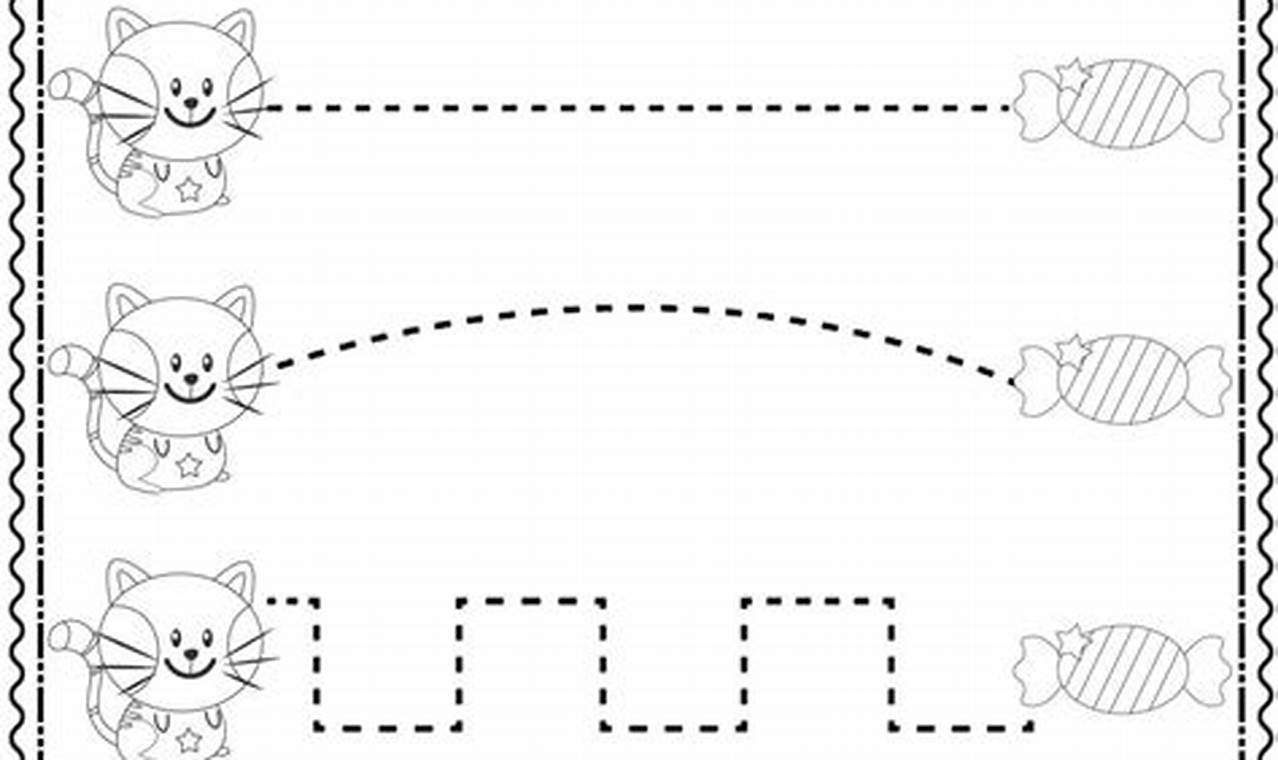Fine motor skills are essential for early childhood development, laying the groundwork for future academic success. Practicing these skills through activities such as tracing helps children develop the hand-eye coordination and muscle control necessary for handwriting, drawing, and other important tasks. The “Tracing Various Lines for Fine Motor Practice” worksheet offers a fun and effective way to hone these critical abilities.
The key learning benefit of the tracing lines worksheet lies in its ability to significantly enhance fine motor control. As children carefully trace each line, they refine the small muscles in their hands and wrists. This practice not only improves dexterity but also strengthens hand-eye coordination, a vital skill for tasks such as writing, cutting, and buttoning. The worksheet also aids in developing pre-writing skills, paving the way for confident letter formation in the future.
This worksheet features a variety of lines designed to challenge and engage young learners. It includes straight lines (horizontal, vertical, and diagonal), curved lines, zig-zag lines, and wavy lines. Each line is presented with a clear starting point and a dotted line for easy tracing. The bold lines make it simple for children to follow, while the diverse patterns keep the activity interesting and prevent monotony. Ample space is provided between each line to allow for comfortable tracing and reduce the risk of errors.
To use the worksheet effectively, begin by providing a comfortable and supportive environment. Ensure the child has a properly sized pencil or crayon. Encourage the child to start at the designated point and slowly trace along the dotted line. Initially, adult assistance may be needed to guide the child’s hand. Break the worksheet into smaller sections to maintain focus and prevent fatigue. Praising effort and celebrating small successes can keep the child motivated and enthusiastic about learning. Using a thicker pencil or crayon can also make it easier for younger children to grip and control the writing tool.
For continued fine motor skill development, several additional resources can be utilized. Kidtraces.com offers a wide range of complementary worksheets, including those focused on letter tracing, number tracing, and shape recognition. Educational games that involve building, sorting, and manipulating small objects are also beneficial. Furthermore, daily activities such as playing with playdough, using scissors, and buttoning clothes all contribute to strengthening fine motor skills. Consider incorporating these activities into the daily routine to reinforce the skills learned through the tracing worksheet.
The “Tracing Various Lines for Fine Motor Practice” worksheet is a valuable tool for supporting early childhood development. It provides a structured and engaging way to enhance fine motor control, hand-eye coordination, and pre-writing skills. Readers are encouraged to download and utilize this free resource to help children build a strong foundation for future academic success. Explore more free worksheets on Kidtraces.com to discover additional ways to support continuous learning and skill development.
